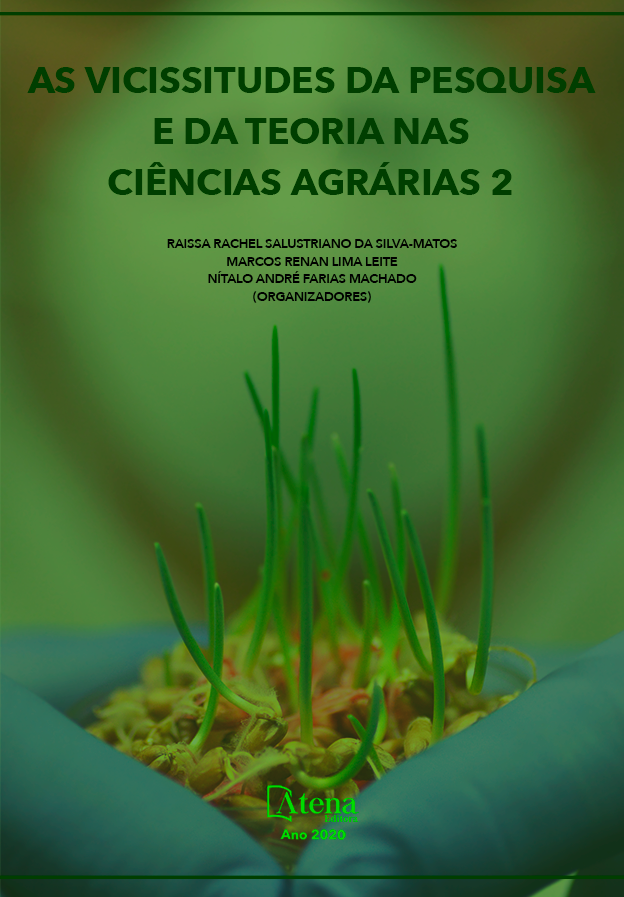
Produção de mudas arbóreas com lodo da estação de tratamento de água (leta) do saae de Guanhães – MG
Com o objetivo de testar a utilização do LETA como substrato na produção de mudas de Inga edulis e Eucalyptus grandis, estas foram distribuídas em 6 tratamentos constituídos de 20 repetições cada, onde a concentração do lodo na mistura variou de 0 a 100%. Após 20 dias da semeadura foram avaliados o índice de velocidade de emergência (IVE), porcentagem de emergência (PE), o tempo médio de emergência em dias (TME). Após 120 dias avaliou parâmetros morfológicos como, diâmetro do colo (DC), altura da parte aérea (A), massa seca da raiz (MSR), massa seca da parte aérea (MSPA), clorofila, área foliar e comprimento total de raízes. Para verificar diferença entre os tratamentos foi realizada uma ANOVA seguida por teste Tukey a 5% de probabilidade. Independente da espécie, não houve diferenças significativas para parâmetros de IVE, TME, PE e clorofila. Os tratamentos com 100% de LETA apresentaram pior desempenho nas variáveis DC, MSPA e MSR em ambas espécies. As mudas dos tratamentos IT1, IT2, IT3 e IT4 apresentaram a mesma área foliar (F=7,10; p<0,05), comprimento total de raízes (F=20,06; p<0,05) e volume de raízes (F=14,56; p<0,05), mostrando que até há concentração de 60% do lodo não há efeitos deletérios para a planta em relação esses parâmetros. Os tratamentos ET1, ET2 e ET3, apresentarão mesmo comprimento total radicular (F=19,24; p<0,05), mostrando que até há uma concentração de 40% de lodo, as plantas não são afetadas negativamente. O tratamento ET6, foi o que apresentou pior desenvolvimento.
Produção de mudas arbóreas com lodo da estação de tratamento de água (leta) do saae de Guanhães – MG
-
DOI: 10.22533/at.ed.4642003119
-
Palavras-chave: Substrato, LETA, Inga edulis, Eucalyptus grandis
-
Keywords: Substrate, LETA, Inga edulis, Eucalyptus grandis
-
Abstract:
In order to test the use of LETA as substrate for the production of seedlings of Inga edulis and Eucalyptus grandis, these were distributed in 6 treatments consisting of 20 repetitions each, where the sludge concentration in the mixture ranged from 0 to 100%. After 20 days of sowing, the emergency velocity index (EVI), emergency percentage (PE), and the mean emergency time in days (TME) were evaluated. After 120 days we evaluated morphological parameters such as stem diameter (CD), seedlings height (A), dry mass of root (MSR), dry mass of the aerial part (MSPA), chlorophyll, leaf area and total length of roots. To check the difference between treatments an ANOVA was performed followed by a Tukey test at 5% probability. Independent of the species, there were no significant differences for IVE, TME, PE and chlorophyll parameters. The treatments with 100% LETA showed worse performance in the variables CD, MSPA and MSR in both species. The seedlings from treatments IT1, IT2, IT3 and IT4 presented the same leaf area (F=7.10; p<0.05), total length of roots (F=20.06; p<0.05) and volume of roots (F=14.56; p<0.05), showing that until there is a concentration of 60% of the sludge there are no deleterious effects to the plant in relation to these parameters. The treatments ET1, ET2 and ET3, will present the same total length of roots (F=19.24; p<0.05), showing that until there is a concentration of 40% of mud, the plants are not negatively affected. The ET6 treatment, was the one that presented worse development.
-
Número de páginas: 7
- Tamires Gomes do Nascimento
- João Paulo Lemos
- Graziele Wolff
- Giuslan Carvalho Pereira
- João Paulo Gonçalves


